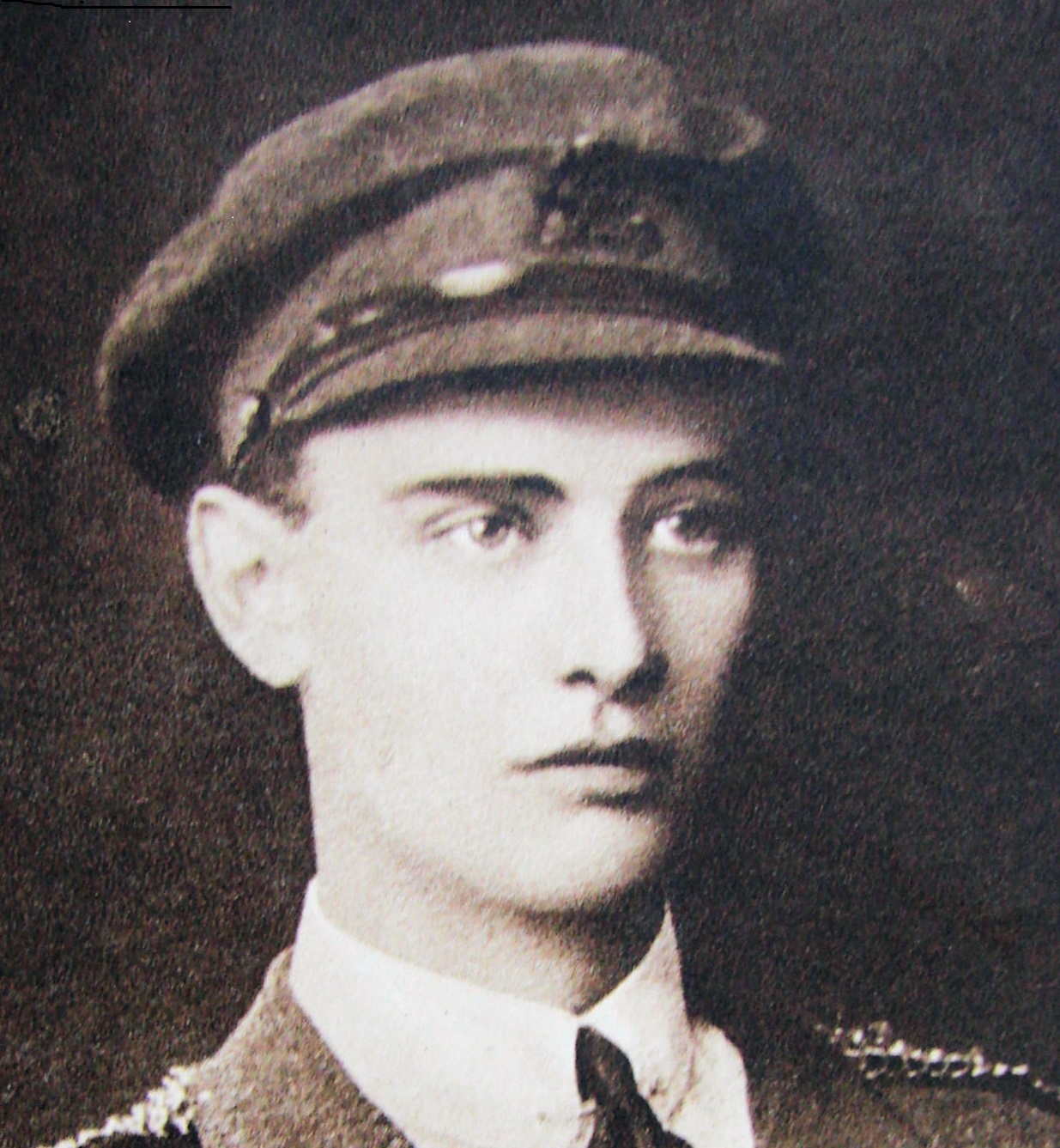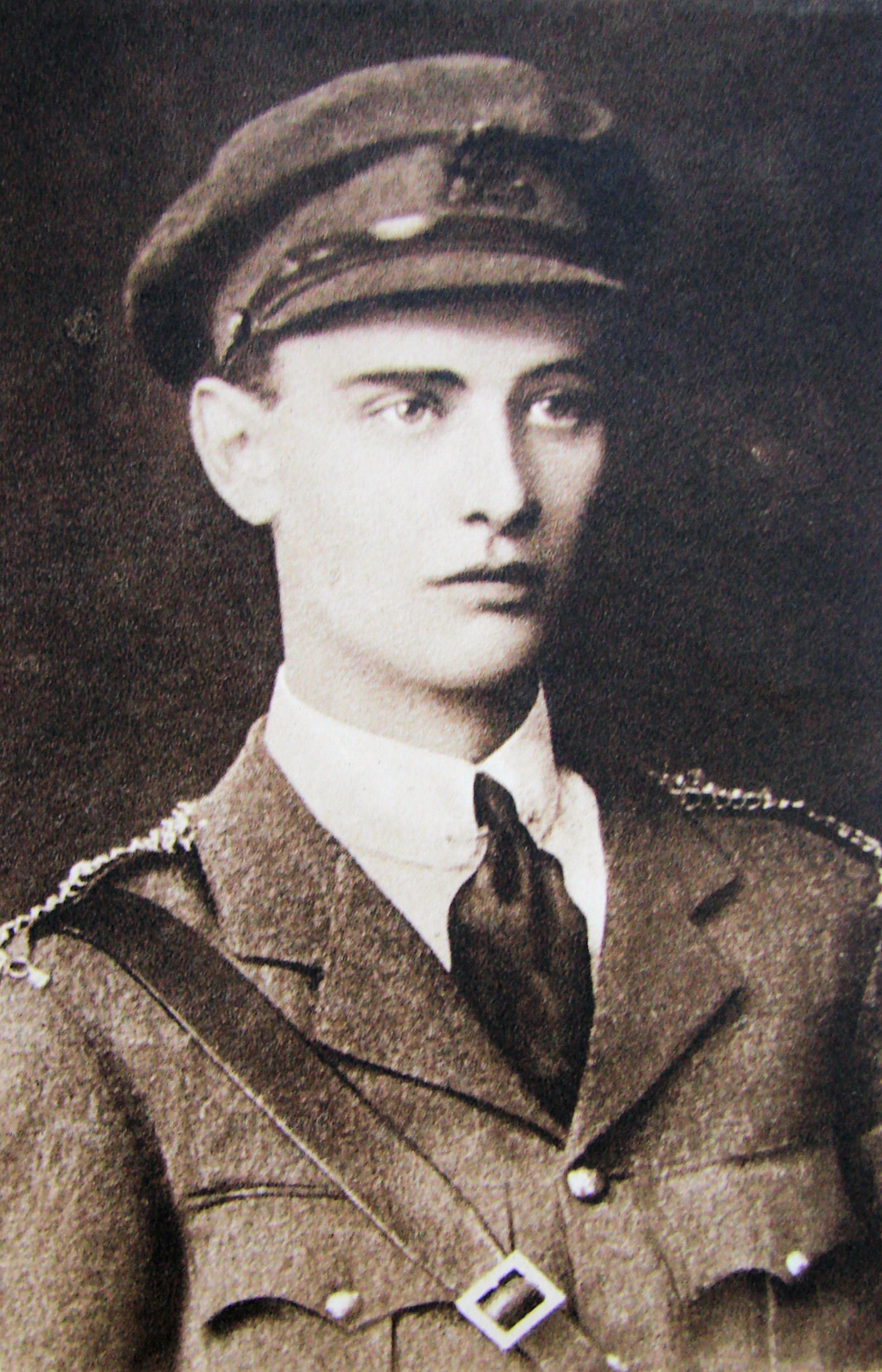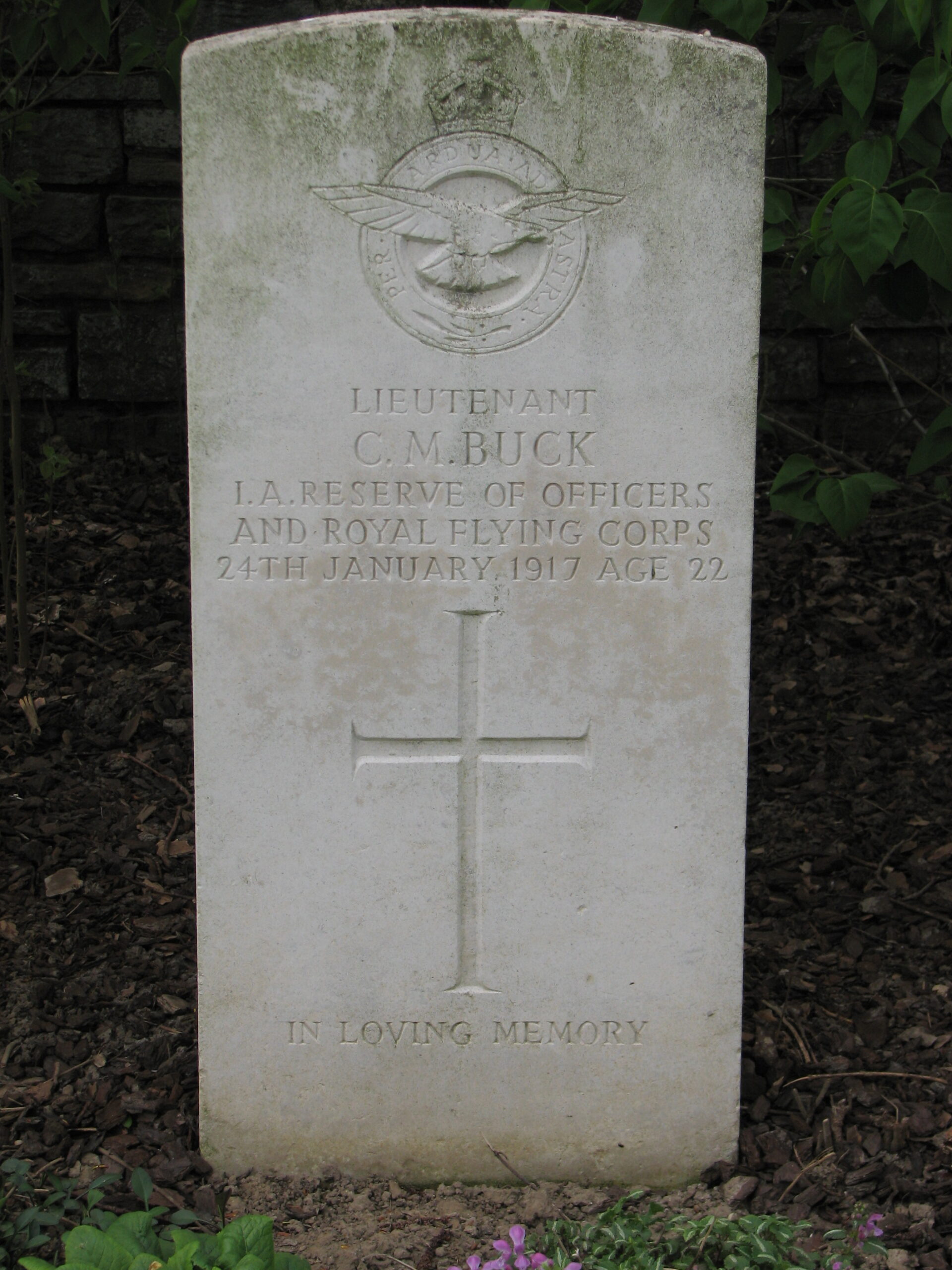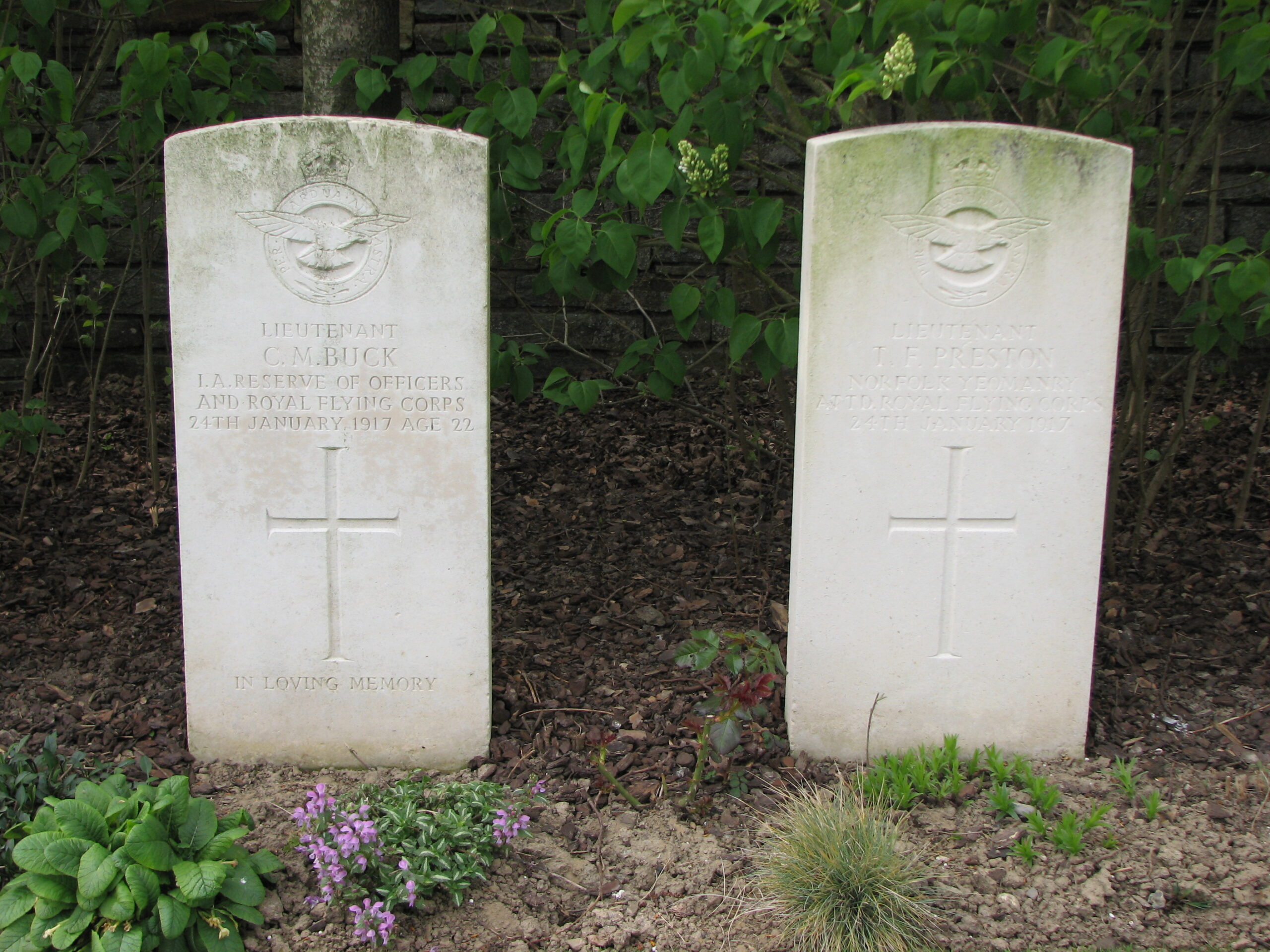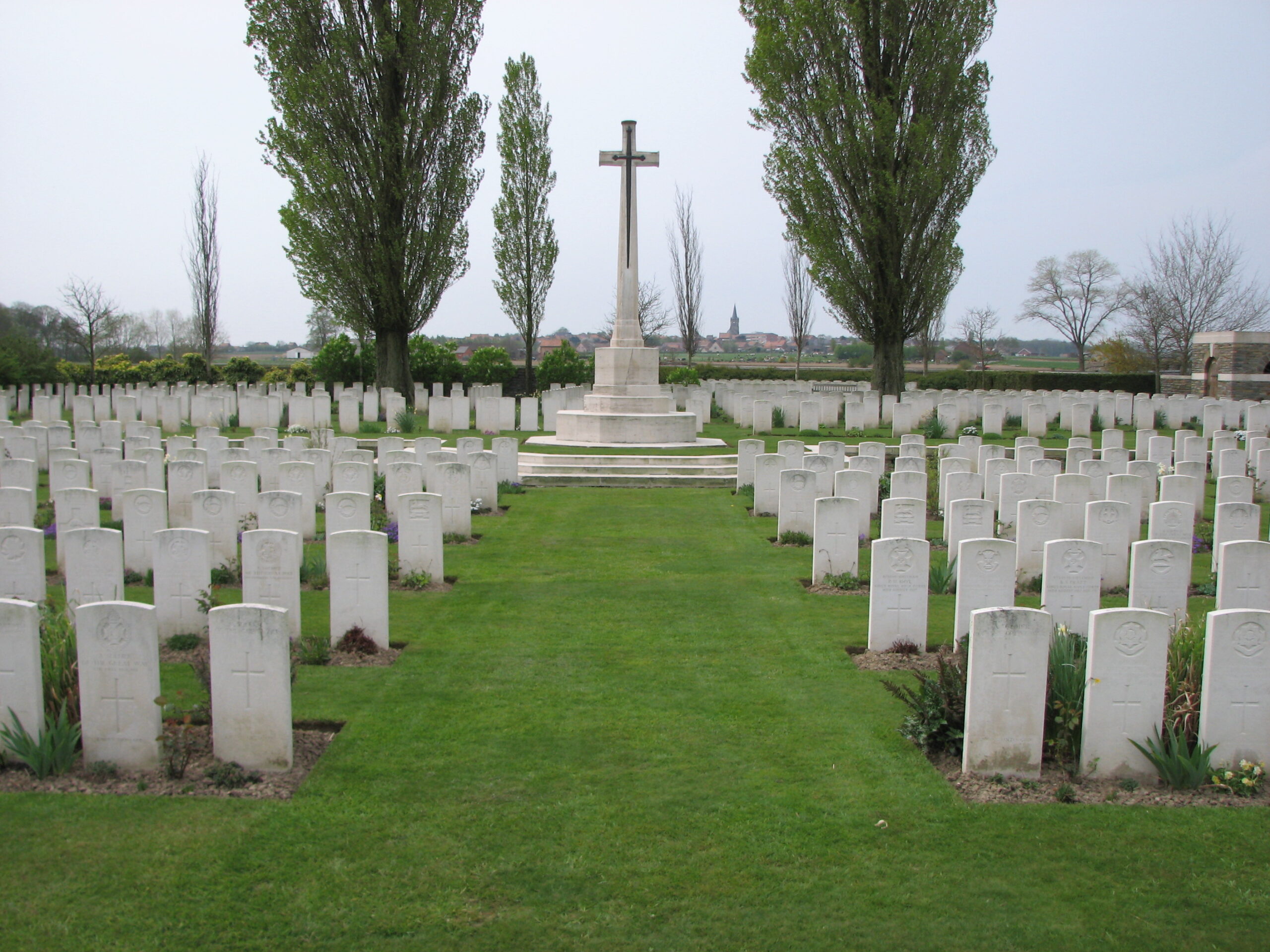Charles Buck (1895 - 1917)
Born in India, Charles attended school in England and lived for a time with his grandparents at The Hermitage. He initially served in France with the Indian Army before transferring to the Royal Flying Corps. Charles was killed in action in 1917 when the plane he was flying in was shot down, south of Ypres.
- 15
- Died in the Great War
- 51.978523, 1.019185
Details
| Name: | Charles Melvill Buck |
| Service: | Indian Army Reserve of Officers, attached to the Royal Flying Corps |
| Unit: | 53 Squadron |
| Rank: | Lieutenant |
| Date of Death: | 24th January 1917 |
| Age: | 21 |
| Buried: | Plot I, Row H, Grave 12, Oosttaverne Wood Cemetery, near Ieper (Ypres), Belgium |
Family Background and Early Life
Charles Melvill Buck was born in India on 18 February 1895 – probably at his parents’ residence at Jullundur in the Punjab – the only son of Edward John Buck and Annie Margaret Buck.
At the time of Charles’ birth, Edward Buck was Secretary to the Government of India in the revenue and agricultural department. 1 Edward Buck later went on to become a renowned journalist and Reuters agent with the Government of India. He was made an O.B.E. in 1918, promoted C.B.E. in the same year and knighted in 1929.
Charles’ mother, Annie Margaret Jennings had married Edward in Calcutta in February 1894. She was the daughter of Lieutenant-Colonel Robert Melvill Jennings, of the Indian Army who was at that time the Deputy Adjutant-General, India.
As was common with most of the Anglo-Indian elite, Charles was educated at boarding school in the United Kingdom, first at Twyford School (one of the oldest preparatory schools in the country), and later at Winchester College.
At some point between 1902 and 1911, Charles’ grandfather – who retired in 1906 as General Robert Jennings – moved with his wife Agnes, to The Hermitage in East Bergholt. 2 In Queen Victoria’s Birthday Honours List of 1896, Robert Jennings was appointed as a Companion of the Order of the Bath (CB). By 1905, Robert Jennings had reached the rank of General. Retiring in 1906, three years later he was appointed Knight Commander of the Order of the Bath (KCB), and was entitled to the prefix of Sir. Charles lived with them here for a time, though the exact dates are uncertain.
After leaving school, Charles went first to Argentina and later Australia, to learn ranching. He was in Australia upon the outbreak of war in August 1914, and immediately enlisted in the Royal Australian Garrison Artillery. He appears to have served with them on Thursday Island, which guarded the Torres Straight between Australia and Papua New Guinea.
During this time, it appears that Charles – or his family – were making efforts to get him transferred to the Indian Army as an officer. Not only would this have fitted with the family background, but the social norms of the time would have made it unacceptable for one of the social elite to be serving as anything other than an officer. 3 In addition to Charles maternal grandfather, his mother’s brother was also an officer in the Indian Army. Major John Gilderdale Jennings, of the 66th Punjabis – attached to the 6th Battalion of the Royal Dublin Fusiliers was killed in action at Gallipoli in August 1915. He is also commemorated on the East Bergholt Memorial to those who gave their lives in the Great War.
Indian Army
The attempts were successful, and on 15th January 1915 he was commissioned as a 2nd Lieutenant in the Indian Army Reserve of Officers. Shortly thereafter he joined the 31st Duke of Connaught’s Own Lancers (a Cavalry Regiment) at Kohat, India (in what is now Pakistan).
In June 1915, Charles was ordered to France and at the end of August he was attached to the 2nd Lancers (Gardner’s Horse), another Indian Army Cavalry regiment. 4 One of the most illustrious regiments of the Indian Army, the 2nd Lancers (Gardner’s Horse) had been in France since December 1914. In France, they were called upon to man stretches of the line as infantry, or to provide working parties for the front. The Regiment remained on the Western Front until February 1918, at which point they were transferred to Palestine. The unit’s War Diary records that Charles – along with another officer, 1 Indian Officer (the distinction was an important one at that time) and 99 rank and File soldiers joined the Regiment as dismounted reinforcements on 30 August 1915.
During the time that Charles served with the Regiment, they were mainly located in the rear areas of the Somme, which was then a comparatively quiet sector of the front. In early September 1915, a detachment from the Regiment did man the trenches for a week, but whether Charles was one of those involved is not documented.
In February 1916, Charles became ill with pneumonia, like many of the soldiers in the Indian Army who had lived in hot climates for most of their lives, he was very susceptible to illness and disease caused by the cold and damp. He was invalided back to the U.K.
Transfer to the Royal Flying Corps
After recovering from his illness in May 1916, Charles transferred to the Royal Flying Corps (R.F.C.), the air arm of the British Army. 5 On 1 April 1918, the Royal Flying Corps was amalgamated with the Royal Naval Air Service (the Royal Navy’s air arm) to form the Royal Air Force. It was the first independent air force in the world. He was trained as an Observer, latterly at the Wireless and Observers School at the Royal Flying Corps Station at Brooklands, south-west of London.
The main appeal of an aerial arm to the Army – at least initially – was because it allowed them to see what the enemy was doing behind the front line. Reconnaissance aircraft were employed right from the very early days of the war, and it was primarily from the need to destroy or protect these aircraft that fighter planes were developed.
As an Observer, Charles role would have been to take photographs of enemy positions or troops in order to allow the Army to build up a picture of what was going on behind the front lines. He may well also have been trained as an artillery spotter, to tell the British guns how accurate their fire was, and how it needed to be corrected to hit the target.
Reconnaissance and artillery observation missions were dangerous. The plane was required to fly straight and level to allow the observer to either take the photographs, or spot for the guns. They were ideal targets for anti-aircraft guns, and the enemy’s fighter planes.
Return to France
Charles was posted to 53 Squadron, equipped with the B.E.2c. This was a single engine biplane which carried a crew of 2, a pilot (sitting in the rear cockpit) and an observer (who sat in the front cockpit). 6 As an aircraft, the B.E.2 had a high degree of inherent stability which were assisted it in role as an artillery observation and aerial photography duties. The B.E.2c was usually armed with a single Lewis machine gun for use by the observer, but it was still extremely vulnerable to attack by enemy fighter aircraft.
The Squadron proceeded to France on 26th December 1916. The aircraft left Farnborough and flew direct to St. Omer (the headquarters of the R.F.C. in France), where they were joined by the ground elements on New Year’s Day 1917.
Three days later the Squadron moved to one of the airfields close to the French town Bailleul, from where they were to support IX Corps who were holding the line around Messines, south of Ypres.
On 24th January 1917, Charles and his pilot Lieutenant Thomas Preston, 7 Lieutenant Thomas Frederick Preston, 1 Norfolk Yeomanry, attached Royal Flying Corps. Lived Barton Hall, Neatishead, Norwich. Killed in action, 24 January 1917, aged 27. took off and proceeded over the front near Wytschaete on a photographic reconnaissance mission. They never returned.
The Germans later dropped a message to confirm their deaths. It later transpired that Charles’ aircraft was shot down by Vitzfeldwebel Alfred Ulmer, 8 Charles plane was the 3rd victory of the day for Vitzfeldwebel Alfred Ulmer from Jasta 8. Generally credited with 5 air victories, Alfred Ulmer was himself killed in action on 29th June 1917. and crashed behind the lines near Warneton on the French/ Belgium border. Both Charles and Thomas Preston were killed. They were the Squadron’s first casualties in France.
Charles was buried by the Germans in a military cemetery at Houthem.
Postscript
In 1923, as part of the Imperial War Graves Commission’s efforts to concentrate isolated graves and some of the smaller burial grounds into permanent cemeteries, Charles’ body was exhumed and re buried in the Oosttaverne Wood Cemetery, near Wytschaete (Wijtschate), south of Ypres (Ieper). 9 The Imperial War Graves Commission was renamed the Commonwealth War Graves Commission (CWGC) in 1960.
Acknowledgements
I am very grateful to Andy Pay for his kind assistance with the research into Charles service career.
Copyright © Mark Ashmore, 2024
- 15
- Died in the Great War
- 51.978523, 1.019185

